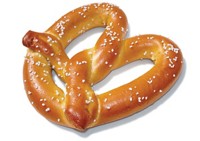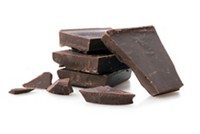Advertisement
Grab your lab coat. Let's get started
Welcome!
Welcome!
Create an account below to get 6 C&EN articles per month, receive newsletters and more - all free.
It seems this is your first time logging in online. Please enter the following information to continue.
As an ACS member you automatically get access to this site. All we need is few more details to create your reading experience.
Not you? Sign in with a different account.
Not you? Sign in with a different account.
ERROR 1
ERROR 1
ERROR 2
ERROR 2
ERROR 2
ERROR 2
ERROR 2
Password and Confirm password must match.
If you have an ACS member number, please enter it here so we can link this account to your membership. (optional)
ERROR 2
ACS values your privacy. By submitting your information, you are gaining access to C&EN and subscribing to our weekly newsletter. We use the information you provide to make your reading experience better, and we will never sell your data to third party members.
Food Science
Molecular Gastronomy Cooks Up Strange Plate-Fellows
Controversial theory of flavor pairing seeks to illuminate why foods go together well
by Carmen Drahl
June 18, 2012
| A version of this story appeared in
Volume 90, Issue 25

Some foods taste good together, and others don’t. It’s a simple observation rooted in the complex biochemistry of human senses. During the past decade, an idea about why this is the case has been making the rounds among chefs, flavor chemists, and food scientists.
Interact with this Foodpairing tree at http://cenm.ag/foodpair.

Interact with this Foodpairing tree at http://cenm.ag/foodpair.
The idea, which has several names but is often called flavor-pairing theory, is that foods that share important flavor compounds are likely to make a good pair. It has spurred a culinary movement and a company dedicated to helping the pros discover innovative pairings through chemistry. However, the concept is still in its infancy, and it’s not without vociferous criticism. Some critics tell C&EN that hard data supporting the idea are lacking and that taste is too complicated to boil down to a molecular rule of thumb. Other critics are more direct, as network analysis expert Maurits de Klepper of Amsterdam University College is in decrying flavor pairing as “a European fad” (Gastronomica, DOI: 10.1525/gfc.2012.11.4.55).
The flavor-pairing concept traces back to a partnership between François Benzi, senior flavor chemist at the world’s largest privately owned flavor house, Firmenich, and Heston Blumenthal, owner of three-Michelin-starred U.K. restaurant The Fat Duck. The two share a knack for unconventional food combinations, such as pork liver and jasmine flower or white chocolate and caviar. Thanks to fragrance chemistry expertise and analytical instrumentation, they realized their pairings have key flavor compounds in common—indole in the pork-jasmine case, and amines in the white chocolate-caviar combo.
Inspired, Blumenthal sought additional food combinations, guided by information on the volatile organic compounds in hundreds of different foods, since the sense of smell, which detects those volatiles, plays a big part in the sense of taste. Soon, lists of Blumenthal’s outlandish pairings made their way around culinary and flavor science circles, as well as the Web.

That’s where Norweigan organometallic chemist Martin Lersch learned about Benzi and Blumenthal’s exploits. Lersch, who runs the molecular gastronomy blog Khymos, started a flavor-pairing blog event, called “They Go Really Well Together,” in 2007. At the start of each event, he notified food bloggers of one unusual food duo that share volatile compounds and challenged them to craft appetizing dishes from that pairing.
For instance, one combo Lersch put forward was strawberry and coriander, after he deduced from the literature that the two share at least one key odorant, (Z)-3-hexenal (J. Agric. Food Chem., DOI: 10.1021/jf960366o; “Handbook of Flavor Characterization: Sensory Analysis, Chemistry, and Physiology,” CRC Press, 2004). Bloggers who tried it confirmed the combination was tasty.
Lersch notes that odorant overlap alone wasn’t a guarantee of success—during some events, bloggers had to tweak recipes quite a bit to balance flavors. But in any case, kitchen experiments can’t demonstrate that shared volatile compounds are a reliable guide to whether foods will pair well.
That seems to be the goal of Sense for Taste, a privately held firm that provides consulting services for chefs, bartenders, and food companies on developing innovative pairings. Sense for Taste cofounder Bernard Lahousse, a bioengineer by training, says his company is out to develop a science inspired by Benzi’s flavor chemist instincts. The firm’s researchers analyze foods and use a proprietary algorithm to calculate the compatibilities of possible pairings. They then translate those data, kept in an in-house database, into easy-to-grasp visualizations called Foodpairing trees, which provide an overview of possible combinations with one ingredient.
The Belgium-based company has played matchmaker for several multinational brands. Its recipe for almond sponge cake with poached banana, chocolate, and Heinz tomato ketchup ice cream is generating buzz on Facebook, Lahousse says. “People want to be surprised.”
Lahousse confirmed that the company uses high-performance liquid chromatography and gas chromatography/mass spectrometry but declined to elaborate on other methods. The algorithms, he says, take into account more than the number of volatile compounds two foods share. Human senses perceive different compounds at different thresholds, so things must be weighted appropriately, he says.
Not all scientists are sold on the flavor-pairing concept. For instance, last December, a team suggested that the idea can’t explain every cuisine (Sci. Rep., DOI: 10.1038/srep00196). Led by theoretical physicist and amateur molecular gastronomist Sebastian E. Ahnert of Cambridge University, the scientists developed a network linking flavor compounds to ingredients in more than 50,000 online recipes grouped by cuisine, including North American, Latin American, or East Asian cuisines. Their network unearthed an intriguing contrast. North American recipes use far more compound-sharing pairs than would be expected by chance. For instance, mozzarella, tomato, and parmesan share 4-methylpentanoic acid. However, East Asian recipes rarely share key flavor compounds.
Lahousse says he doesn’t agree with the physicists’ results. The databases that are the foundation of the work, he explains, equally weight the entire complement of odorant compounds from GC/MS analysis of a food, rather than favoring those key molecules that drive the taste experience. Those compounds are traditionally determined by techniques such as GC-olfactometry, which involves a live person sniffing separate compounds and rating contributions to smell or taste sensations. “If they had our data they would’ve come to a different conclusion,” Lahousse says.
Ahnert says he and his colleagues chose their approach so they’d be able to attach statistical significance to the results. He agrees with Lahousse that the odorant data the team used are incomplete. Now that their network analysis method is hammered out, they are collecting data that will distinguish more important odor compounds from less important ones, something he thinks will be critical in confirming and better understanding what they observed in Eastern cuisines.
According to Wender L. P. Bredie, a professor of sensory science at the University of Copenhagen, the flavor-pairing concept needs refining. He thinks pairings that result from such experiments are more novel than they are pleasant, and he has preliminary data to back it up.
Bredie’s team used a commercial database to estimate the overlap of volatiles in 53 pairs of foods. His team then placed the food pairs in glass vials, separated by a small piece of aluminum foil. A panel of 40 volunteers sniffed the combinations and rated their intensity, pleasantness, and novelty. If the flavor-pairing principle were at work, Bredie says, one would expect to see a correlation with the pleasantness rating and the overlap of volatiles in the two foods. His team saw no such correlation. However, they did notice that certain aroma combinations were deemed more novel than either scent alone. Bredie plans to submit more detailed results to a peer-reviewed publication soon.
“When top chefs combine foods, they and their customers might say, ‘Wow, this is really new!’ But it’s not really pleasant,” Bredie says, because the average consumer’s preferences are tied to culture and previous experiences. Flavor pairing “has engaged people to create new things,” he adds. “In that way it has made positive contributions.”
Interact with this Foodpairing tree at http://cenm.ag/foodpair.
“The biggest problem in this field is really a lack of data,” Lersch says. Most scientists in the field have to rely on commercial databases, as Bredie did, and the data within them aren’t always complete or standardized.
The big barrier preventing academics from pursuing that kind of data themselves is cost, says Peter Barham, a polymer physicist at the University of Bristol, in England, who’s also studied molecular gastronomy. Statistically valid, blinded tests with professionally trained tasters don’t come cheaply, he says. He adds that he was fortunate to be privy to proprietary information when he dabbled in flavor pairing, though he couldn’t publish some of his results.
It’s going to take a lot of data to convince Harry J. Klee that flavor pairing makes scientific sense. “It’s ridiculous,” says Klee, a professor of horticultural science at the University of Florida. “And I think our own work emphasizes how ridiculous it is.” Klee’s lab has been studying tomato flavor for years, and it just published a metabolomics study fingering geranial, a volatile compound that’s present in low amounts in tomatoes, as a big contributor to satisfying tomato flavor (Curr. Biol., DOI: 10.1016/j.cub.2012.04.016). More abundant volatile compounds had little to do with tomato preferences.
Klee thinks geranial enhances tomato sweetness without adding sugar, raising the possibility that playing it up could enhance sweetness in other foods. That finding, Klee says, illustrates how little scientists know about how the brain integrates taste and aroma signals from multiple receptors to conjure a flavor experience. “That whole flavor-pairing crap is just a gimmick by a chef who is practicing biology without a license.”
“We don’t want to practice biology,” says Peter Smith, chef-proprietor of PS 7’s restaurant in Washington, D.C. “We just want to make really cool flavors and combinations.” If the vehicle happens to be science-based, that’s fantastic. But Smith says tools like Lahousse’s Foodpairing trees are useful from a creative standpoint even if the science isn’t proven. “I’ve been obsessed with them,” Smith says. And he’s got all his cooks studying them for ideas. “In the day-to-day grind of this business you get tunnel vision, and these things pull in ingredients we don’t always think about.”
Lahousse says that the combinations his company provides are just a starting point and that finding the right balance is up to the chef. He also says the flavor-pairing concept isn’t meant to apply to all of cooking—some ingredients in a recipe have little, if anything, to do with flavor. “If you add lemon, you may want to add it because of its flavor, or because of its acidity, or both,” he says.
For Terry E. Acree, the Cornell University scientist who developed the Flavornet database, flavor pairing “is a totally real thing.” Saying it has no basis in science, he says, “is not the same thing as saying the rules are ephemeral.” Flavor pairing, Acree adds, is just one part of the lesson chefs like Blumenthal are teaching the food world. To change the way people eat, cooks need to scientifically understand the materials they’re manipulating.
Firmenich’s Benzi agrees: “I love cooking, and I’ve realized I’ve always unconsciously had this molecular approach to it. If a chef could take the time to experience some of the esters and some of the lactones I work with, by smelling them or tasting them, I’m sure they’d approach the kitchen in a different way.”




Join the conversation
Contact the reporter
Submit a Letter to the Editor for publication
Engage with us on Twitter